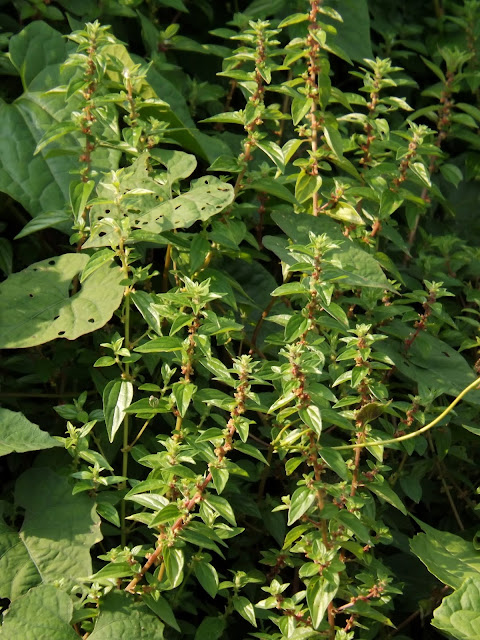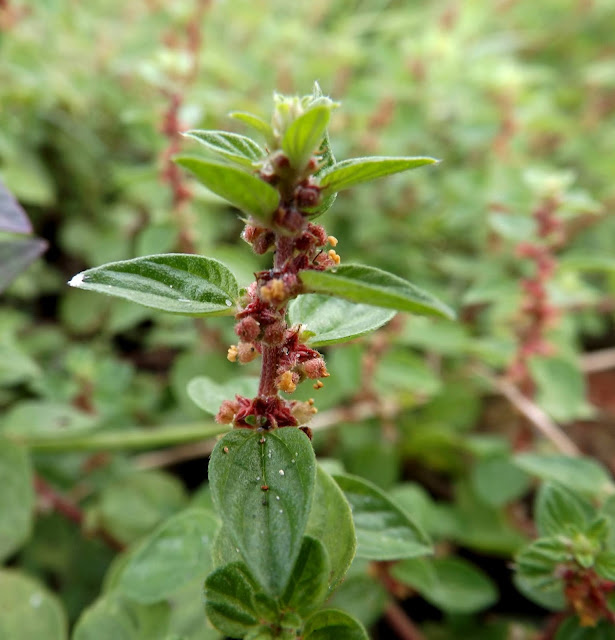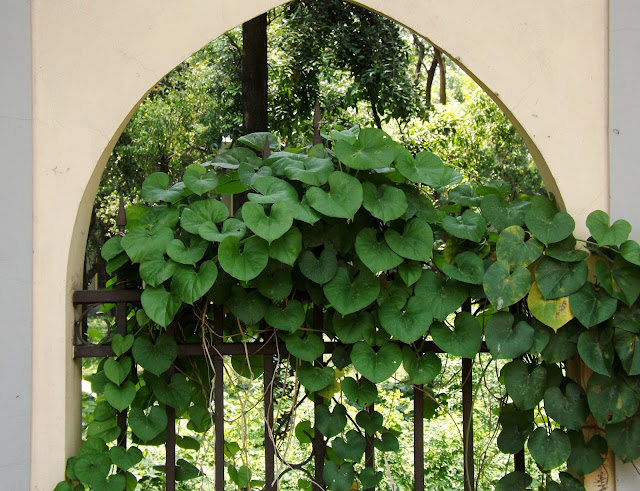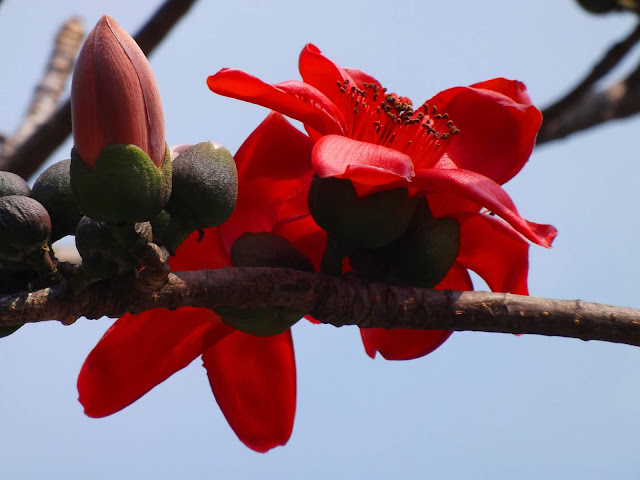Kularuki or Pouzolzia, Pouzolzia zeylanica
Kularuki or Pouzolzia (Pouzolzia zeylanica, family: Urticaceae) is a soft but erect herb with soft hairs, upright branches and creeping basal part, attaining a height of 30-40 cm. Stem is multiangled and soft green, sometimes reddish. It is found almost everywhere in Bangladesh. It can be seen in village thickets, waterside area, crop fields and fallow lands. Outside of the country the perennial plant is found in Southeast Asia to Australia. It has been introduced in Central America nowadays.
Other name: Graceful Pouzolz's Bush.
Leaves are short-petioled, upper part alternate, but opposite in lower part; broadly ovate or elliptic ovate, 1-5 cm long, entire with acute apex, base rounded or cordate.
Flowers are monoecieous, in axillary globose clusters, greenish white, glabrous or slightly pubescent. Flowering occurs in the rainy season. Fruit an achene, ovoid or elliptic, 2 mm long, shinning black. The plant is propagated by seeds and cuttings.
As an medicinal plant it is used in stomachache, cough, sore throat, gonorrhoea, syphillis, gangrenous ulcers, scabies, cuts and wounds. Leaves are consumed as vegetable somewhere.
Synonyms: Urtica glomerata, Pouzolzia indica, Boehmeria alienata, Boehmeria cochinchinensis, Boehmeria glochidiata, Boehmeria nana, Parietaria decaisnei, Parietaria indica, Parietaria oppositifolia.







Comments
Post a Comment